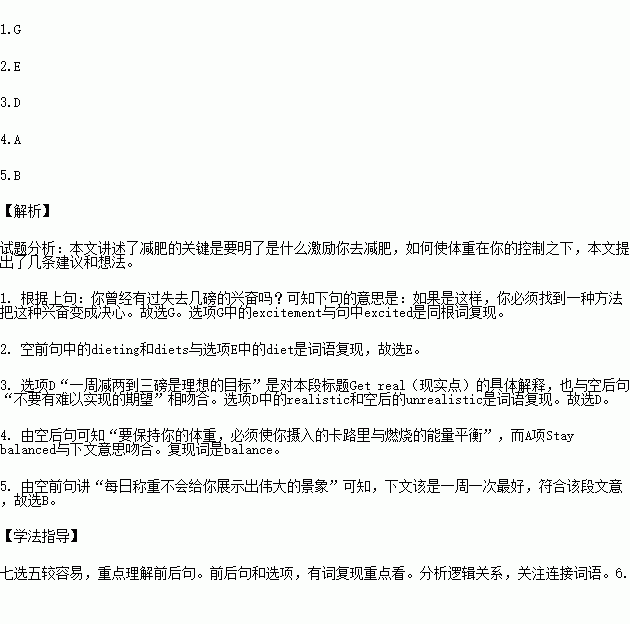题目内容
根据短文内容,从短文后的选项中选出能填入空白处的最佳选项,并在答题卡上将该选项涂黑。选项中有两项为多余项。
The key to losing weight is to understand what really motivates you. Have you ever been about losing a few pounds? 1. And to help you keep your weight under control, you need some coping strategies.
Ask questions. When you’re researching different dieting products and plans or even talking to a doctor about diets, ask as many questions as you can. 2. Ask questions like: Do I have to purchase special meals or supplements? Does the program include a part to help me maintain my weight loss?
Get real. 3. Don’t burden yourself with unrealistic expectations. Remember, large amounts of weight loss are not realistic and are most likely not safe or healthy. Talk with your health care professional to determine a healthy weight goal.
4. To maintain your weight, you must balance your intake of calories with the energy you burn. Just 30 minutes of fast walking in most days can take about 10 pounds off your weight each year.
Weigh yourself weekly. It’s important to track your weight on any diet or weight loss plan, but don’t get on the scale every day. Weighing daily won’t show you the big picture. 5.
A. Stay balanced.
B. Once a week is fine.
C. Stick with your healthy eating plan.
D. Losing one to two pounds a week is a realistic goal.
E. Being well informed will help you choose the best diet for you.
F. Regular weight check-ins will show you your progress over time.
G. If so, you must find a way to turn that excitement into determination.

